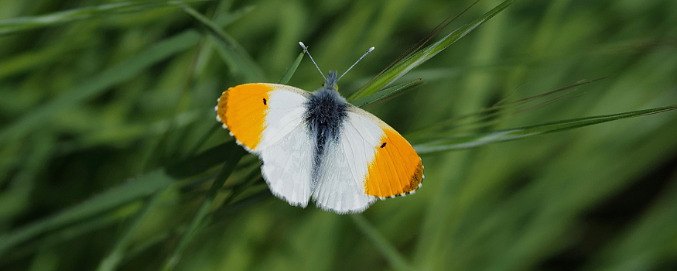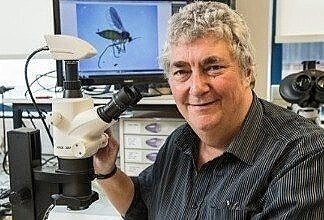
The arrival of spring with the orange tip butterfly
5 Minute Read
Dr Ian Bedford tells us everything we need to know about the 'bug of the month' for March, the orange tip butterfly.Each year, we’ll have two options in the calendar for when spring officially starts and for when it ends. Meteorological spring, which rigidly begins on the first day of March and ends on the last day of May, or the variable astronomical spring, which begins at the spring equinox (19th, 20th, or 21st March) and ends at the summer solstice (20th, 21st or 22nd June).
However, many people will have found their way to decide on the arrival and departure of spring each year, by simply observing the activity of the animals and plants in their gardens. Whether it’s the fresh smell of new leaves as plant buds begin to break, the appearance of a certain flower, or the sight of nesting birds and buzzing bumblebees.
But for those of us who might take note of the different butterfly species that visit our gardens throughout the year, there’ll be one species that’ll unequivocally inform us that spring has arrived: the orange-tip butterfly. A small white butterfly that displays a mottled green pattern on the underside of its hind wings, and whose males have unmistakable bright orange tips on their forewings.

What is the orange-tip butterfly?
Unlike the British butterflies that hibernate as adults over winter and are on the wing during spring and again throughout summer (brimstones, small tortoiseshells, commas, and peacocks), the adult orange-tips are only usually seen during spring since their life cycle depends on the early fruiting stage of their larval food plants being available, and the cooler climatical conditions of spring.
The life of an orange-tip begins each year, when semiochemical signals from the natural world trigger the butterflies to hatch from their pupae. The butterflies then feed on the nectar from spring flowers to maintain their energy as they search for mates and the cruciferous wildflowers such as hedge garlic and cuckooflower, that will host the orange-tip’s larvae.
Once mated, the females will begin laying orange-coloured eggs singly on the plant’s young seed pods which, after just a few days, begin hatching into small green larvae that then feed on the pods. Rapidly growing over the next 3 to 4 weeks, the larvae mature, before they crawl off to find a suitable place to pupate. This could be on the twigs of nearby bushes or will often be on an old stem of their host plant where they’ll secure themselves with a fine silk girdle before shedding their skin for the final time and becoming a pupa.
The active stages of the orange-tip’s annual life cycle will have now been completed in time for the onset of summer when the immobile stage of the butterfly’s development continues inside the pupa. Hopefully then, over the next 10 months (which is the longest pupation time of any British butterfly), the orange-tip pupae will not only escape natural predation but the lethal effects of mowing wildflower areas, autumnal hedge cutting, and overzealous garden weeding where they chose to pupate.
If so, they should successfully metamorphose into adult butterflies that will then hatch with the arrival of spring the following year.

About Dr Ian Bedford
Ian has been fascinated by the bug world for as long as he can remember. From studying butterflies on the South Downs as a youngster, he went on to pursue a career in Research Entomology and ran the Entomology Dept at the John Innes Centre in Norwich up until his recent retirement.
VISIT WEBSITE
'Bug of the month'
Visit our 'bug of the month' archive.Every month Ian will share his knowledge on how to protect your plants and gardens from preventable pest invasions while providing valuable insights into the insects regularly found in our gardens.
find out more
Comments (1)
Leave A Comment
Most popular articles
1
Plastic plant pots dimensions and uses2
Peat vs Peat Free - Choosing the right Potting Compost3
How to Grow Watercress at home in plant pots4
January Jobs5
March Jobs
Reply